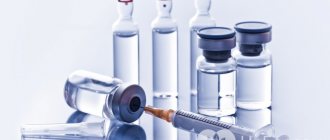Fluorine is a necessary element that plays a role in the metabolism of mineral processes . Responsible for the structure of teeth and the formation of bone tissue. In normal amounts, fluoride helps the body cope with infection, with its help bones gain strength, heal faster in case of fractures, and teeth are better able to resist caries. Fluoride poisoning occurs when there is an excess of it in the body, as it is highly toxic. In this case, it no longer brings benefit, but provokes the reverse process.
Effect on the body
Fluoride is involved in the process of iron absorption by the body and thus helps to increase hemoglobin, which is important for patients with anemia. It also neutralizes some heavy metal salts and radionuclides. The trace element is involved in the process of hematopoiesis, the formation and development of bone tissue, the formation of teeth, nails, and hair .
Its effect on the human body is enormous, and therefore it is important to maintain sufficient levels of fluoride in the body. For this reason, fluoride-enriched water has gained popularity and is widely used by the population, since fluorine is instantly absorbed from this source, and the process of water fluoridation at all stages of production is controlled, which eliminates the increased content of the element, which can be hazardous to health.
Disputes about the benefits and harms of water with fluoride have not subsided for half a century, since fluoridation of tap water became widely used in Europe. On the one hand, studies confirm that after the innovation, cases of dental caries in children decreased by almost a third. Public health says this is the most effective way to prevent tooth decay.
However, on the other hand, the harm of fluoride has also been convincingly proven. It turns out that it affects the endocrine system, which leads to disruption of brain function . Further research conducted in this area has confirmed that excess fluoride disrupts the functioning of the nervous system and reduces IQ levels.
In connection with these discoveries, the European Center for Disease Control and Prevention, which dealt with this issue, decided to reduce the fluoride content in tap water to 0.7 mg per liter. Health care considers it inappropriate to completely abandon fluoridation, since the benefits of fluoride, in their opinion, outweigh the possible harm, since sufficient evidence has not been provided to confirm a number of cases - such as the connection of fluoride with osteosarcoma, premature birth and other conditions.
How to neutralize the harmful effects of fluoride?
“You can reduce the toxicity of fluoride by adding aluminum or calcium salts to the soil,” writes Yu. Aleksandrovich. Nothing is known about aluminum yet; increasing calcium may be beneficial for our body. However, the danger of fluoride increases with the growth of industry and the use of inorganic fertilizers in agriculture.
Most food products contain on average 0.2 - 0.3 mg of fluoride per 1 kg of product: in fish - 5 - 15 mg/kg, in milk - 0.1 - 0.2 mg/l.
Not so long ago, many people were interested in krill. The cheap product is a source of protein that can be used to make excellent flour. But it turned out that krill contains an incredibly high and dangerous amount of fluorine: 1 kg of raw mass contains 2 g of this element, boiled mass contains an average of 750 mg (for reference, we add that in 1 liter of any wine the maximum permissible fluorine content is 5 mg).
Fluoride tablets are sometimes given to school-age children to prevent dental caries. This is very dangerous, especially if there is excess fluoride in the soil or if you live in areas adjacent to superphosphate factories or aluminum smelters.
Tea lovers should know: the amount of fluoride in the finished drink depends on its strength, duration of infusion and duration of boiling. You need to boil water once and quickly, otherwise the salts turn into hard-to-digest compounds. You need to steep the tea for no more than 5-6 minutes and remember that in a glass of long black tea you will get 0.2 mg of fluoride. In such varieties of tea as Ceylon, Assam, Darjeeling, etc., 100 g of dry leaf contains from 10.26 to 15.25 mg of fluoride. In Chinese tea it can be from 3 to 400 mg, since the Chinese use fluoride-containing pesticides to spray the tea bush. If you want to be healthy, it is wiser not to drink too strong tea. In addition, xanthine was found in tea, which is a poison for hemoglobin. It is better to drink infusions from the leaves and petals of dried plants - black currant, sage, thyme, raspberries, rose hips, chicory, mint.
Types of fluoride
Being a gaseous bioelement with a characteristic odor of ozone and chlorine, fluorine has a yellowish color and actively interacts with air, forming a nebula.
It is also the active ingredient in hydrofluoric acid, a colorless liquid formed after fluorine reacts with hydrogen contained in the air (hydrogen fluoride). Concentrated hydrogen fluoride literally burns mucous membranes and even the skin . After the action of such a poison, almost all organs are damaged - fluorine is absorbed into the blood through the upper respiratory system.
Some forms of fluorine are based on its crystallization and appear in the form of a white or colorless powder, which is subsequently used for various purposes:
- sodium fluoride;
- sodium fluoride;
- cryolite.
Excess fluoride can lead to dangerous conditions. Food fluorine is not as dangerous as its gas form, which is released when working with fluorine-containing components.
Fluoride can be removed from the body with the help of foods containing microelements such as iodine, boron and selenium.
Fluoride is absorbed by the body in two ways:
- Respiratory organs.
- Gastrointestinal tract.
When fluorine gas is inhaled, an element of the mucous membrane is immediately absorbed in the upper respiratory tract . When consuming foods high in it, absorption occurs through the mucous membrane of the small intestine. Thus entering the blood, the element is almost completely deposited in bone tissue, hair, and nails. And only a small amount continues to circulate in the blood, penetrating the placental barrier, breast milk, slowly metabolized and excreted in the urine.
Description:
Fluorine and hydrogen fluoride are gases at ordinary temperatures. Fluorine and its compounds are used in many chemical and industrial processes. Fluorine and its salts are poisonous; they disrupt calcium metabolism in the body and interfere with enzymatic processes. Fluorides form insoluble precipitates with calcium and reduce the content of calcium ions in the plasma. Hydrogen fluoride (and its aqueous solution - hydrofluoric acid) has the ability to “corrode” tissue. Upon contact with skin and mucous membranes, it causes deep damage and necrosis. Maximum permissible concentration of hydrogen fluoride is 0.0005 mg/l.
Sodium fluoride
The most common poisoning is sodium fluoride, which is also a toxic substance and can negatively affect the heart and blood vessels, contribute to changes in blood pressure, and can lead to stomach upsets and even ulcers. Leads to death at a dosage of 6-8 g per adult weight.
It is the form of fluoride in the form of sodium fluoride that is found in food and water.
Symptoms of sodium fluoride poisoning:
- damage to mucous membranes: irritated eyes and upper respiratory tract;
- conjunctivitis;
- pain and swelling in the nose;
- nosebleeds and poorly healing sores in the eyes and mouth;
- cough, bronchitis and other respiratory diseases;
- malfunction of the circulatory system;
- toxic hepatitis, nephropatitis;
- increased hemoglobin and red blood cells;
- decreased ESR;
- liver damage.
And other disorders that can lead to dystrophic changes in the myocardium, pneumosclerosis, and contribute to the development of leukopenia and lymphocytosis.
Diagnostics
When making a diagnosis, two cases may present themselves:
- jaundice exists, or
- does not exist.
The first form is most common, namely in 90% of all cases. If there is no jaundice, then in the absence of anamnestic data, the diagnosis can be very difficult. If present, poisoning can only be mixed with acute and severe jaundice (fatal), since with phosphorus poisoning it always ends in death. Acute jaundice, which develops at the end of liver diseases (cirrhosis, cancer, syphilis, etc.), is easily excluded.
Acute and primary severe jaundice are much more difficult to distinguish from phosphorus jaundice. If there are no anamnestic indications, then recognition is possible only on the basis of subtle differences in the initial symptoms and course of the disease, since the whole picture is identical in both cases.
With phosphorus poisoning, digestive disorders occur earlier and are more pronounced. Jaundice and albuminuria are not as severe. The vomited masses and exhaled air glow in the dark. There is a garlic taste in the mouth. Various kinds of hemorrhages recede into the background here, and most cases of phosphorus poisoning occur without those hemorrhages that constitute one of the main symptoms of primary severe jaundice.
Sodium silicofluoride
Sodium fluorosilicone is the chemical name for a product better known as rat poison. It is a radical means of killing rats and mice and often reaches humans through food. You can also get poisoned by inhaling the powder when its particles, even in small quantities, land on the mucous membrane.
Symptoms of intoxication are typical for poisoning and are characterized by increased fatigue, weakness, and a depressed state. Symptoms also include:
- headache indicates the beginning of general intoxication, where an alarming symptom is the ineffectiveness of painkillers;
- nausea and vomiting indicate damage to the digestive organs by the toxin;
- due to disruption of the circulatory system, the skin turns pale;
- bleeding of various etiologies associated with vascular damage and poor blood clotting. Can be internal and external. Internal ones are especially dangerous and can be fatal .
Depending on the severity of the lesion, more serious signs may appear associated with disorders of the cardiovascular, circulatory, and nervous systems.
Cryolite
Through the respiratory system, irritation of the mucous membrane typical of fluorine occurs and leads to poisoning. Manifestations of fluoride poisoning are always more or less typical and their severity depends on the degree of damage:
- conjunctivitis with pharyngitis, laryngitis, bronchitis;
- nosebleeds, bleeding gums;
- damage to the skin if it has been significantly affected by the gas: in this case, difficult-to-heal ulcers form.
Cryolite poisoning occurs most often in cases where professional interaction occurs with this element , for example, when melting milk glass.
Symptoms:
Inhalation of vapors of hydrogen fluoride or fluorine causes attacks of suffocation, shortness of breath,. After cessation of exposure to vapors, the symptoms disappear, but after a latent period of several hours, coughing, heaviness in the chest, wheezing and cyanosis reappear and develop.
In the case of ingestion of fluorides, such as sodium fluoride, salivation, abdominal pain, diarrhea, weakness, and shallow breathing occur. Can be . Death comes from breathing. If quick death does not occur, then jaundice and.
When hydrogen fluoride gets on the skin and mucous membranes, it causes damage, the severity of which depends on its concentration. Hydrogen fluoride concentrations above 60% quickly cause a deep, painful burn that heals very slowly. Concentrations above 50% cause little tissue damage.
Long-term intake (orally or into the lungs) of fluoride leads to the development of chronic poisoning (fluorosis), which is characterized by the following symptoms: weight loss, weakness, joint stiffness, brittle bones, discoloration of teeth.
Treatment of poisoning
In case of poisoning with any type of fluoride, urgent hospitalization is necessary, as delay can pose a threat to life. In order not to waste time, since every second counts, before the ambulance arrives, it is necessary to carry out initial manipulations:
- let the patient breathe in a soda solution;
- provide peace and warmth;
- give drugs based on codeine and dionine, as well as drugs for the heart;
- if the skin is affected, you need to rinse it with water as quickly as possible, then treat it with 10% ammonia and thoroughly wash the affected areas again;
- apply magnesium ointment.
Acute fluoride poisoning poses a threat to life, but chronic fluoride poisoning is no less dangerous and more insidious, the victims of which can be people who actively use fluoridated water.
First aid
If you notice signs of solvent poisoning, you should immediately begin first aid.
- Take the victim to fresh air and provide him with oxygen.
- In case of solvent poisoning through the skin, first aid is to remove the poison - it should be washed off with warm water and soap.
- In case of poisoning with petroleum products, vomiting should not be induced; in other cases, if poison gets ingested, induce vomiting and rinse the stomach.
- Give the victim strong sweet tea to drink, and under no circumstances give milk or vegetable oils - they increase the rate of absorption.
- Take any adsorbent - activated carbon, Polysorb MP, Enterosorb and others.
- If toxic liquid gets into the eye, rinse with running water, apply a sterile bandage and consult a doctor.
- If consciousness is impaired, place the victim on his back, turn his head to the side; Be careful not to let your tongue sink.
At the slightest sign of poisoning of the nervous system - convulsions, loss of coordination, intoxication - call an ambulance! It is also necessary to consult a doctor if the solvent gets inside - the lethal dose of the substance is small and can be 20-100 ml.
The consequences of solvent poisoning can be very diverse. In mild cases, all symptoms disappear after a few days without a trace. But when large doses of these highly toxic compounds enter the body, serious diseases develop: toxic hepatitis, acute interstitial nephritis, nephrosis, bronchitis, pneumonia.
Signs of fluoride
Fluoride is a disease that mainly affects children and adolescents, in which there is an oversaturation of bone and cartilage tissue with fluoride, which, against the background of active growth, can lead to dangerous conditions.
The disease begins with a sensitivity disorder of the teeth and gums; jagged and worn teeth, a brownish coating on the enamel, and caries should also cause alarm . Later symptoms are characterized by gingivitis and periodontal disease, burning, pain and swelling of the nose. Over time, the nasal septum from persistent ulcers may become thinner and disappear. A child or teenager may complain of frequent nose and gum bleeding. During this period of the disease, bronchospasm begins, a violation of the motor functions of the digestive system. The activity of the kidneys is impaired, which leads to albuminuria and microhematuria.
If the disease is not noticed in time, the disease develops into chronic pneumonia and bronchial asthma.
Later, and sometimes immediately, the patient may complain of pain in the heart, irregular heart rhythm . Symptoms of autonomic-vascular dysfunction with vascular disorders and circulatory failure appear.
We found out that fluoride in large quantities is extremely harmful to the body and in modern conditions it is necessary to carefully monitor the fluoride diet in order to prevent pathological conditions. Take care of yourself and your loved ones.
When is fluoride beneficial and when is it harmful to the body?
Everything is poison and everything is medicine, and only the dose makes poison a medicine; this statement of Paracelsus fully applies to fluorine. Experts say that fluorine is a very necessary element for the whole body. It ensures the growth of nails, hair, bone strength, and the strength of tooth enamel. Fluoride enters both through the blood and from the saliva.
Fluoride is very important for children, as it is involved in various metabolic processes that prevent caries.










